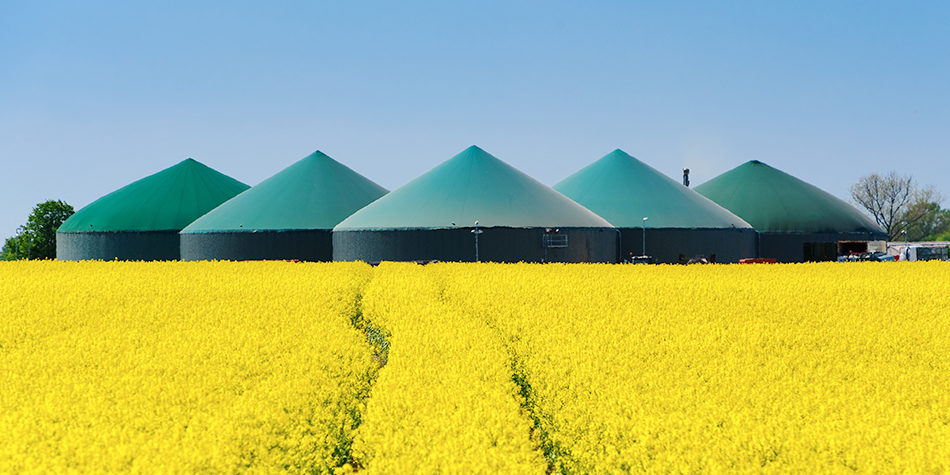Biogas is the mixture of gases produced by anaerobic digestion of organic biomass in the absence of oxygen. Biogas can be produced from different raw materials such as agricultural waste, manure, organic household waste and energy crops during the production of anaerobic digestor (AD) gas. It can also be produced from the gas production in landfills and organic waste dumpsites, or during the sludges digestion in sewage plants. Biogas generation is a growing industry that focuses on converting biogas into electric power or heat, with other options being feeding the gas into the grid or using it as vehicle fuel. Different purification processes have been developed to upgrade the biogas so that the gas can be used in all these applications.
Biomethane must have similar properties to natural gas so that it can be used in similar applications e.g. vehicle fuel or fed into the natural gas grid. Different biogas upgrading technologies, such as cryogenic distillation, membranes, pressure swing adsorption (PSA) and strippers are used to separate methane and carbon dioxide.
Cryogenic distillation is a separation technology that uses the difference in boiling point between methane and carbon dioxide.
Membrane separation uses semi permeable barriers that let carbon dioxide pass through and, consequently, concentrating the methane to the desirable concentration.
Pressure swing adsorption uses the difference in adsorption behaviour of methane and carbon dioxide on adsorbents at different pressures. Pressure swing adsorption is used to effectively separate carbon dioxide from methane.
Scrubbers or strippers make use of the different solubilities of methane and carbon dioxide in different solvents. Solvents such as amines, organic solvent or water are used for upgrading biogas. For example, carbon dioxide is soluble in water and methane is almost not. The carbon dioxide is absorbed at high pressure in the water and desorbed at lower pressure.
Activated carbon technology is used in several process steps to obtain the required purity. Depending on the renewable source, the biogas can contain ammonia (NH₃), hydrogen sulphide (H₂S), siloxanes and/or terpenes.
Ammonia (NH₃) can contaminate the scrubber off gas air mixture and needs to be removed in order to comply with local legal legislation.
Hydrogen sulphide (H₂S) needs to be removed as it has a negative effect on the engine oil, meaning it needs to be changed too frequently resulting in high maintenance costs. H₂S is burned to SO₂/SO₃ in the engine, so we can control the SO₂/SO₃ emissions by removing the hydrogen sulfide before the combustion. Concentrations can also be too high for grid feeding. In general, a gas quality of >99% methane needs to be achieved to be able to feed to the grid.
Hydrogen sulphide (H₂S) can also contaminate the carbon dioxide air mixture and needs to be removed prior to the injection in greenhouses or prior to release into the atmosphere to control the odour.
Siloxanes will cause deposits on the turbine blades, resulting in vibrations or even damage of the turbines, consequently creating extra costs and disturbing the processes.
Terpenes are a large and diverse class of organic compounds, produced by a variety of plants, for example, citrus plants and conifers, that typically have a strong odour. Terpenes are removed from the biogas prior to the injection of the green gas into the grid because they can mask the typical odour of the THT (Tetrahydrothiophene). They can cause problems by reducing the lifetime of gaskets, leading to frequent maintenance which, in turn, has a negative impact on production revenue and continuity.
For optimal biogas treatment, the operational conditions need to be set properly. The Jacobi engineers in your local sales team are there to jointly develop and optimise your systems, resulting in improved revenue and reduced total cost of ownership (TCO).
Jacobi Services offers several solutions for biogas upgrading processes. The solution depends on:
- Flow rate of the gas to be treated
- Annual activated carbon consumption
- Spent carbon composition


